Intro
Not sure which bass to buy? Fed-up with crappy fake Amazon reviews, reviews from inexperienced bassists, or blatantly biased reviews? I’ve got you covered with our no B.S. reviews.
How? This beginner bass shootout was done BLINDFOLDED by our pro reviewers. No B.S., no bias, just rock solid reliable reviews you can trust.
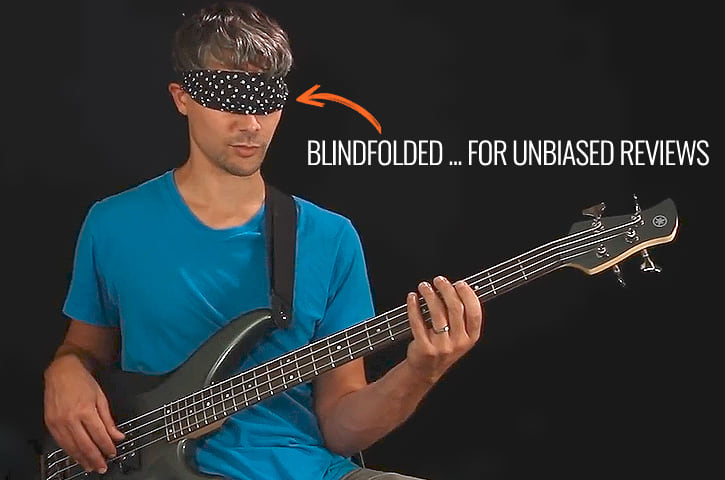
Too Lazy to Read All This?
Get right to the meat…
Jump to the reviews click here.
Jump to the final verdict and the winners click here.
How We Reviewed the Basses
Choosing the Contenders
We scoured the web for hours creating a list of every single bass guitar we could find under $500, ending up with a list of about 200 basses yep — 200.
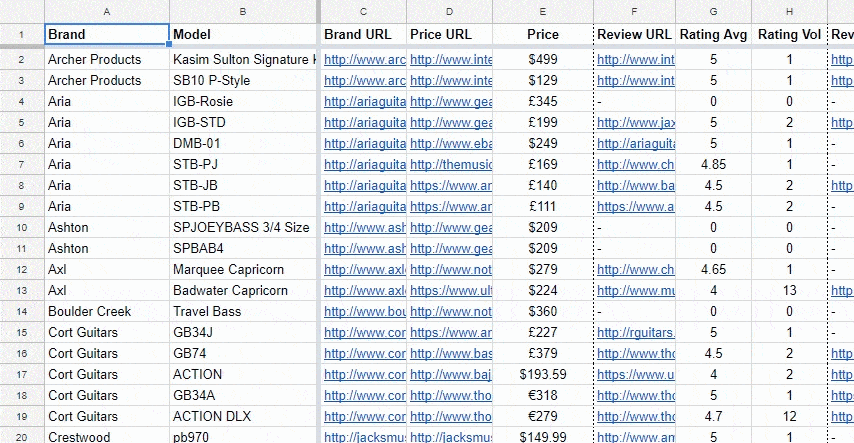
In order to get from 200 basses down to 7 contenders for the shootout, we needed a lot of tricks. Here’s how we did that…
1. Known Brands Only. We started by eliminating basses from companies with no reputation, and basses with no reviews to be found anywhere. It’s safest as a beginner to stick to the popular brands, so that’s what we did.
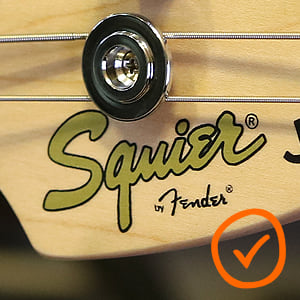
2. Four Strings. We stuck to four string basses. As a beginner, you’ll have a way easier time learning on a four string bass, and then trying out a five or six string bass later on if you feel like it.
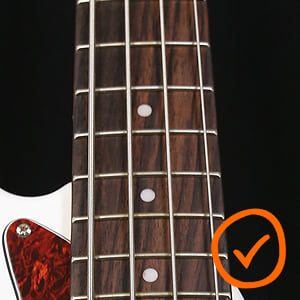
3. Standard Scale Length. For the most part, we stuck to standard 34” scale length basses (one 35” bass snuck in there), which are the most common, and suitable for most people. If your hands are particularly small, it’s worth checking out short-scale basses (which we’ll review in the future).

4. Two Pickups. We limited our choices to basses with two pickups. Single pickup basses have their place in the world, but two pickup basses are better for most beginners because they offer more tone options, so you can explore a wider variety of tones as you “find their sound” and explore different styles of music.
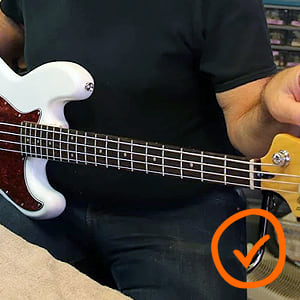
From there, we still had way too many basses to tackle at once, so we used a combination of looking at reviews, popularity, brand reputation, plus more than a little bit of professional intuition, to choose our short list of seven basses for the showdown.
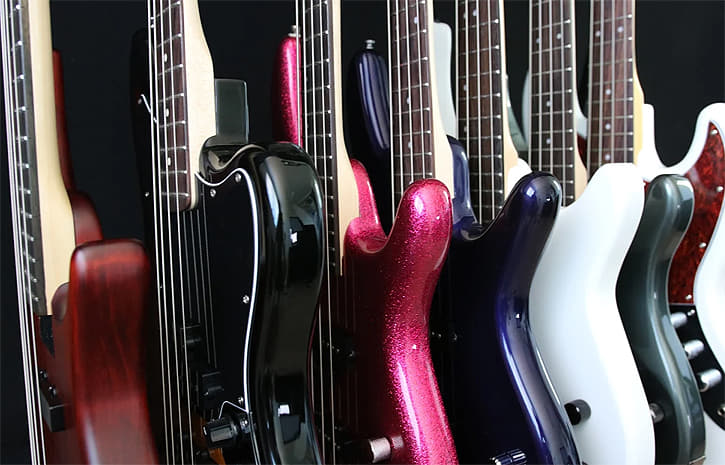
NO B.S. REVIEW PROCESS
As much as humanly possible, we wanted to remove personal bias from these reviews. To do this, I blindfolded my two bass playing buddies so they wouldn’t know what bass they were playing until the end of the review. All three of us are experienced in a wide variety of musical styles, which gave us a basis to judge tone and feel in different instruments.


We approached this review process with genuine curiosity and desire to bring you the best possible recommendations for beginner basses. We aren’t paid by or affiliated with any of the brands we reviewed, and I told my reviewers not to pull any punches.
To make the group test even fairer, we took all seven basses to our bass tech Kent Fossgreen, the go-to guy for instrument and amp repair in the area (and also my dad). First we inspected construction quality and factory setup.

We then put brand new strings on all the basses and did setups so that differences in setup wouldn’t affect our reviewers’ ratings.
In the review room, we monitored the basses out of my TC Electronic RH450 amplifier with RS210 cabinet with the same flat EQ settings for every bass. Again, the only tonal/EQ tweaks that happened at any point in the review process were on the basses themselves.
For the audio you’ll hear on the video reviews I recorded all of our test basses direct into an Audient iD14 digital audio interface running into Logic Pro. In order to give you the best sense possible of the actual “dry” sound of these basses I used no compression or EQ at any point. This is not how bass is usually recorded so keep in mind that all these basses would sound better if the signal was processed in the usual ways.
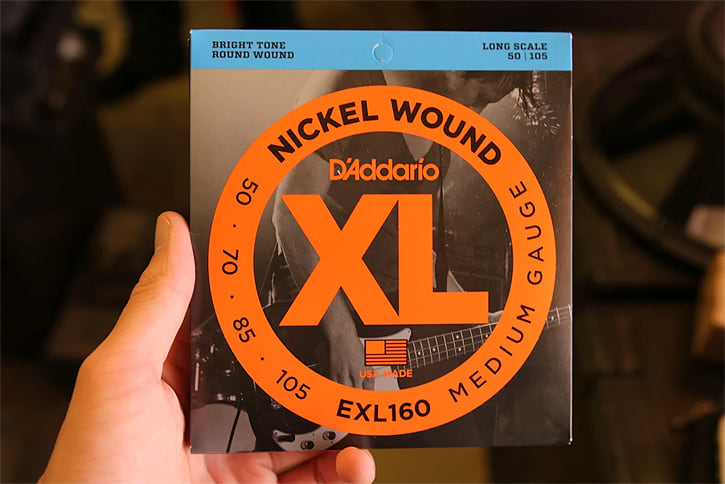
HOW WE RATED THE BASSES
Our four review criteria were Playability, Tone, Comfort, and Versatility. Here’s what those terms mean as I explained them to my blindfolded reviewers:
1. Playability. This focused primarily on the neck of the bass – how comfortable it felt to move around, how the string spacing felt, thoughts about upper fret access, string tension, and if any glaring issues came up like sharp fret edges or dead spots.
2. Tone. We explored the tones we could get by sticking with standard fingerstyle technique and changing the knob settings on the bass. This rating came from overall impression of the tone of the instrument, the quality of the pickups/electronics as perceived by our ears, and if we could imagine actually using the bass on a gig.
3. Comfort. This criteria had the least influence in the overall rating. I asked my reviewers how the bass felt on their body in terms of weight and balance.
4. Versatility. I had reviewers try out a variety of techniques on the bass like picking and slapping to determine if those techniques were physically comfortable to perform, and also if the bass responded with some good sounding tones.
We also examined each bass for construction quality with our bass tech, but since none of the basses had glaring issues this wasn’t factored into the rating system. We did include interesting tech info in the Tech Corner for each bass though.
The overall rating for each bass is an aggregate of all three reviewers ratings.
General Tech Notes
All of our basses shipped in good condition with a playable setup. Our bass tech Kent said in regards to the setups and quality control we observed, “You could buy any of these basses confidently online.” Basses made in Indonesia came with slightly higher setups than basses coming from China, but they were solidly playable across the board.
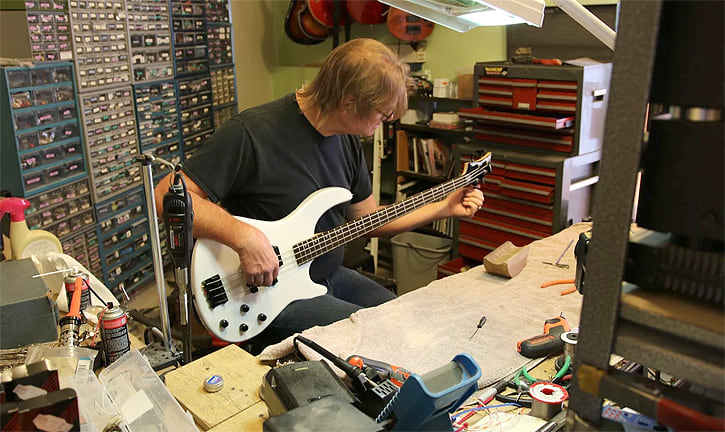
One consistent issue we noticed is that basses with closed gear tuners had loose tuner bushings.
They had probably only been hand-tightened in the factory, which may have been done on purpose to avoid issues when basses are shipped around the world. You should be aware of this so that you can grab a hex wrench and tighten those bushings up when you get your bass, otherwise your tuners might flop around or fall apart.
Epiphone/Tobias Toby Deluxe IV
Reviewed at $229
VERDICT Did this bass live up to the Michael Tobias name? In our opinion, not so much. The only sounds that really impressed us from this bass were the aggressive rock sounds. For anything else, keep looking.
Epiphone/Tobias Toby Deluxe IV Full Review
The first thing you might wonder about this bass is “why is the name so complicated?” Here’s the deal: Michael Tobias has been a respected bass luthier for decades. After a couple years of collaboration with Gibson/Epiphone in the early 90’s, he left to make basses on his own under the name MTD (Michael Tobias Design), but Gibson still owns the “Tobias” name.
So this bass is made in the style of Michael Tobias, which set our expectations high, having had the pleasure of playing some of his custom instruments. Let’s find out if it merits the Tobias name.
Tech Corner
This bass needed a little more setup than the others, but it set up nicely. The 9V battery for the active EQ didn’t have its own compartment, instead it was designed to fit into a clip in the main compartment. However, the battery had come loose from the clip when we opened up the bass, which caused rattling inside the body of the bass.
Playability 8/10
I love the 24 fret neck and it feels easy to use the high frets, although the neck is a little thicker than I like. The string spacing is a little wider than I need but that could be good for a beginner.
Tone 5/10
This bass’s default tone is thin with a ton of top end coming from the tone knob. Most of the tones we explored really needed the active bass boost to sound good, which isn’t my favorite – I’d rather the bass sound good “plain.” On the other hand, this was our favorite bass boost knob out of all the basses we tried, it had a nice focused sound. My favorite tones from this bass were with the tone maxed and some bass boost, provided some solid aggressive rock options. I couldn’t get a quacky funk sound I liked, I just couldn’t stand the brittleness of this bridge pickup.
Comfort 6/10
The weight of this bass felt fine to all of us, and the neck balance was good.
Versatility 6/10
I had a huge problem slapping on this bass because the bridge protruded in a way that dug into my arm unpleasantly. This may not affect all players depending on arm length and technique, but for me this alone makes the bass not even an option. Ben and Gio didn’t experience that issue with the bridge, so they enjoyed the slap tones more than I did.
Specs
| Manufacturer | Epiphone |
| Series | Toby |
| Model | Toby Deluxe IV |
| Manufacturer Website | http://www.epiphone.com/… |
| Price | $229 |
| Active or passive | Active (bass boost) |
| Scale length | 34″ |
| Weight | 7.8lb / 3.54kg |
| Number of frets | 24 |
| Body wood | Radiata |
| Neck wood | Hard maple |
| Fingerboard wood | Rosewood |
| Fingerboard radius | 12″ |
| Pickups | Tobias TBR™ Dual Rail Humbucker x2 |
| Knob functions | Master volume, Pickup blend, Passive tone, Active bass boost |
Snapshots
Squier Vintage Modified Jaguar
Reviewed at $249
VERDICT Squier makes some really solid entry-level instruments, but this Jaguar has a couple issues. Gio described the active bass boost as a “doom knob” that could be really dangerous on your first gig if not handled carefully, and I totally agree.
This bass had a wide spread in the ratings between the three of us. Despite the bass boost issue, Gio liked it a lot more than Ben and I did, which he readily admits may be because a higher-end Fender Jaguar is one of the basses he plays regularly so this bass felt very familiar.
It’s not the worst beginner bass you could choose, but let’s keep looking and see if we can find something better.
Squier Vintage Modified Jaguar
Squier, Fender’s budget line of instruments, has been a standby of the beginner bass market for a long time. Having played the higher priced Fender Jaguar in the past, I was curious to try out the less expensive Squier model and see if it would reproduce the classic Fender sounds we wanted. Let’s find out!
Tech Corner
The Jaguar came with the action a little high, but the intonation was good and the factory strings were nice and fresh.
Playability 7/10
I had fun playing this bass even though the way it feels isn’t really what I like in general. It’s got a relatively thick Fender neck, and you’ve got the typical Fender problem of a huge neck block and bad upper fret access, which is a problem for my playing style. But personal preference aside there, the neck feels good to move around (except those top frets). There seems to be a dead spot on the G string at the 6th fret.
Tone 6/10
All three of us agreed that the neck pickup was much more exciting than the bridge pickup, lending some classic Fender Precision-style tones. We found some nice warm vintage soul tones from the neck pickup with the tone rolled down. Again, the bass sounds a little thin without the active bass boost, and the bridge pickup lacked the “quack” and “punch” we wanted.
Comfort 5/10
Fenders/Squiers always feel a little heavy and clunky to me, and the headstocks are so bulky that the neck tends to dip quite a bit, and I found this to be true with this particular Squier Jaguar too.
Versatility 7/10
Fingerstyle, slapping, and picking all felt great on this bass physically, and there were a couple solid tones to be found with each technique.
Specs
| Manufacturer | Fender |
| Series | Squier Vintage Modified |
| Model | Vintage Modified Jaguar |
| Manufacturer Website | http://shop.fender.com/… |
| Price | $249.99 |
| Active or passive | Active (bass boost) |
| Scale length | 34″ (864 mm) |
| Weight | 8.8lb |
| Number of frets | 20 |
| Body wood | Basswood |
| Neck wood | Maple |
| Fingerboard wood | Rosewood |
| Fingerboard radius | 9.5″ (241 mm) |
| Pickups | Neck: Vintage style Precision bass, Bridge: Standard Jazz bass |
| Knob functions | Neck volume, Bridge volume, Passive tone, Active bass boost |
Snapshots
Cort Action 4 PJ
Reviewed at $199
VERDICT Is this lesser known bass worth checking out? Yes, definitely. We were all really pleasantly surprised by this bass. It wasn’t the best bass we played, but for the money you would be hard pressed to find a better instrument. We’re very interested to try out Cort’s more expensive offerings later down the line.
Cort Action Full Review
Cort came to our attention thanks to jazz bassist Jeff Berlin, who in 2014 became the first big name bassist to endorse Cort instruments. While we were focusing on more popular brands for these reviews, we had a feeling Cort would be worth throwing in the mix.
The Cort Action is also one of the less expensive basses in our review group. So how will the cheaper, least well-known bass stack up against the big names?
Tech Corner
The factory setup was great out of the box, with no buzz even though the trussrod was flat. Maybe the best out of the box setup we saw. We did have to bottom out the E string on the bridge while dialing in the action, which indicates less setup flexibility than we’d like.
Playability 8/10
I love the 24-fret neck on a bass this inexpensive. That said, I wish the cutaway went deeper so I could access the top two frets more comfortably. As it is I have to cram my hand in there a little bit which limits my mobility and ability to play chords up there. I also wish the neck was narrower at the lower frets. But overall, we’re pretty impressed with the neck and playability of this bass.
Tone 6/10
I don’t know if the sparkly pink finish was getting to my head, but there was something I just really liked about this bass’s tone that sounded “sweet” or “earnest.” The bass does seem to be missing some high end – the tone knob doesn’t get very bright, so it’s hard to find crystal clarity for harmonics, and also the upper mids and treble for an aggressive rock sound. For general use, I would keep the tone all the way up, and roll it off for tubby vintage sounds.
Since this is a passive instrument, there aren’t many tone options, but what tones there are sound good.
Comfort 8/10
This bass feels nice and light, and the neck balances well and doesn’t drop.
Versatility 7/10
Fingerstyle and slap both felt great on this bass. While using a pick, I noticed that the corners on the neck pickup were a little sharp when my hand hit them from that particular angle – not dangerously so, just uncomfortable. If this was your bass, you could probably sand them down to be smooth though.
Specs
| Manufacturer | Cort |
| Series | Action |
| Model | Action 4 PJ |
| Manufacturer Website | http://www.cortguitars.com/… |
| Price | $199 |
| Active or passive | Passive |
| Scale length | 34″ |
| Weight | 8lb |
| Number of frets | 24 |
| Body wood | Agathis |
| Neck wood | Canadian hard maple |
| Fingerboard wood | Rosewood |
| Fingerboard radius | 15.75″ (400 mm) |
| Pickups | Powersound PSEB4-4/F & PSEB1-4/R |
| Knob functions | Neck volume, Bridge volume, Tone |
Snapshots
Ibanez Gio GSR200
Reviewed at $199
VERDICT Despite its popularity and favorable reviews elsewhere online, the resounding chorus from all our pro bassist reviewers is that this bass sucks. Don’t buy it.
My one regret with selecting basses for these reviews is that I would love to hear the cheapest bass in the Ibanez SR line up against the Yamaha TRBX304 we look at later, they’re at the same price point and have a lot in common. The Ibanez SRs I’ve played are much better basses than this GSR200.
Ibanez Gio GSR200 Full Review
Ibanez is one of the most popular bass guitar manufacturers, and this is one of the most popular beginner basses we could find – does it deserve the spotlight? Let’s see what happens.
Tech Corner
The Ibanez came with a decent setup, no buzz, and the factory strings were okay. It set up really well. We hated the flimsy chrome plastic knobs. On the plus side, the headstock has a slick little trussrod cover that flips open by hand, no tools required.
Playability 6/10
This bass felt pretty average to play. The neck was playable and there was decent access all the way to the 22nd fret. The neck feels a little wider and thicker than I personally like.
Tone 3/10
This bass had an obnoxious active bass boost knob that added a ton of gain and boominess. I couldn’t get any of the funky punchiness I wanted out of the bridge pickup even when I plucked right over it. Overall the bass sounded dull even with the passive tone maxed.
Comfort 6/10
Fine.
Versatility 6/10
Plucking, slapping, and picking all felt fine on this bass physically, but again the tones were really lacking all around.
Specs
| Manufacturer | Ibanez |
| Series | GSR |
| Model | GSR200 |
| Manufacturer Website | http://www.ibanez.com/… |
| Price | $199.99 |
| Active or passive | Active (bass boost) |
| Scale length | 34″ |
| Weight | 7.3lb |
| Number of frets | 22 |
| Body wood | Poplar |
| Neck wood | Maple |
| Fingerboard wood | Rosewood |
| Fingerboard radius | 12″ |
| Pickups | Std. P neck pickup, Std. J bridge pickup |
| Knob functions | Neck volume, Bridge volume, Passive tone, Active bass boost |
Snapshots
Dean Edge 10 PJ
Reviewed at $239
VERDICT Despite all the positive reviews elsewhere, this bass did not fare well in our tests. All of three of us agreed – only buy this bass if you just care about looks and have matching white shoes.
Otherwise, look elsewhere. With the huge disparity between this bass’s user reviews and our experience with it here, I have to guess that most bass reviews are written by beginners who aren’t qualified to comment on the differences between instruments and how they stack up to professional quality instruments.
Dean Edge 10 PJ Full Review
The Dean Edge 10 PJ has very positive user reviews. Will it withstand the test of three pro bass players?
Tech Corner
This bass came to us with no buzz and playable action, but the intonation was a hair off on the A and D strings. The pickups had a surprisingly high output volume, which later proved to be an issue when trying to record this bass. There were subtle paint lines on the finish on the back of bass. The bridge saddles were already up against the bridge so we weren’t able to lower the action as much as desired.
Playability 4/10
This bass only has 22 frets, but the top two felt hard to reach around the cutaway. We didn’t really like the overall feel, which we ascribe to some combination of the setup, string tension, and neck.
Tone 2/10
Bummer. Overall this bass sounded boomy and undefined. The electronics were confusing at first since they didn’t match the manufacturer’s description. I couldn’t get a single sound I really liked. The bridge pickup is in a really strange position, almost three inches from the bridge, where most bridge pickups are one or two inches from the bridge, which resulted in a lack of satisfying “quack” and “punch” that we expect from a bridge pickup.
Comfort 6/10
This one felt a little heavy. The neck balance was good.
Versatility 4/10
The space between the fingerboard and neck pickup felt too tight for me to be comfortable slapping, particularly for doing index finger pops on the lower strings. It was hard to find a spot for the pick too, making this bass the most difficult physically to pick and slap that we’ve seen.
Specs
| Manufacturer | Dean |
| Series | Edge |
| Model | Edge 10 PJ |
| Manufacturer Website | http://www.deanguitars.com/… |
| Price | $239 |
| Active or passive | Active (bass boost) |
| Scale length | 35″ |
| Weight | 8.9lb |
| Number of frets | 22 |
| Body wood | Basswood |
| Neck wood | Maple |
| Fingerboard wood | Rosewood |
| Fingerboard radius | 16″ |
| Pickups | DMT Design P, DMT Design J |
| Knob functions | Neck volume, Neck tone, Bridge volume, Bridge tone |
Snapshots
Yamaha TRBX304
Reviewed at $350
VERDICT Do you get what you pay for? For the most part, the answer is yes. The electronics in this bass operate at higher standard than any other bass we looked at. To quote our bass tech Kent, “The Yamaha is a really nice modern bass, it’s got a lot of really great features for an entry level bass. The fit and finish is really nice, the hardware’s good… a step above everything else we’ve looked at. I’m pretty impressed. You definitely get what you pay for”
Yamaha TRBX304 Full Review
Do you get what you pay for with beginner basses? We’re gonna find out by reviewing the Yamaha TRBX304, which is the most expensive bass we’ll look at in this review series.
We’d like to thank Loud and Clear Music in Cotati, CA for providing this bass to us for our reviews. If you’re in the area, go in there and check out their ever-changing selection of new and consignment basses and other instruments.
Let’s check out the TRBX304 and find out if spending a little more on a bass pays off.
Tech Corner
The factory setup came with a little buzz on the G string, but we were able to adjust it out with no problems. The trussrod actually didn’t need any tweaking, maybe because the five piece neck is more stable than the solid maple necks. The Yamaha has higher quality hardware overall than we’ve seen on the other basses.
Playability 7/10
I felt really comfortable on this neck. I love the 24 frets but I wish the cutaway went deeper so I could reach all the frets without changing my technique. There was something about the string tension that Gio and I didn’t like, it maybe felt a little floppier than we wanted, but this might be resolved by setting the action a little higher.
Tone 8/10
This is where the extra money you pay for this bass goes. Better electronics means more versatility and better functioning knobs. Since the electronics in this bass are of a higher quality than we’ve looked at in the other basses in this series, any issues we had are more subtle.
Overall the tones coming out of this instrument sounded very modern and somehow metallic to me, which matched the look of the bass. Even with the bass boosted a bit and the treble all the way down, I couldn’t quite find the thumpy tubby sound I would want for Motown or soul. The neck pickup had a great growl to it. The bridge pickup is solid and has more low end than the cheaper bridge pickups, but like every other bridge pickup we looked at in these reviews it’s still not quite giving me the punch that I want.
While I liked the 5-way EQ selector at first, my enthusiasm waned over time. It felt a little too complex for beginner use, and I didn’t love the EQ curves. The slap setting felt a little boomy, and the solo setting had a nice gain boost but added extra low end I didn’t want.
Those issues aside, all three of us gave this good marks for tone. There were lots of usable tones, and the knobs responded well to our tweaks.
Comfort 8/10
Solid. Bonus point for the thumb rests on the pickups.
Versatility 9/10
Fingers, pick and slap were all easy to perform on this bass, and each had some good tones. I especially liked slapping on it, either with just the neck pickup or with both pickups balanced, it had a good modern sound.
Specs
| Manufacturer | Yamaha |
| Series | TRBX |
| Model | TRBX304 |
| Manufacturer Website | https://usa.yamaha.com/… |
| Price | $350 |
| Active or passive | Active |
| Scale length | 34″ |
| Weight | 9.1lb |
| Number of frets | 24 |
| Body wood | Solid mahogany |
| Neck wood | Maple and mahogany 5pc |
| Fingerboard wood | Rosewood |
| Fingerboard radius | 10″ |
| Pickups | MHB3n,MHB3b |
| Knob functions | Master volume, Pickup blend, Bass boost/cut, Treble boost,cut, 5-way Performance EQ selector |
Snapshots
❗ 2024 Update
The Vintage Modified Jazz is no longer in production, but you’ll get an almost identical bass with Squier’s Classic Vibe series.
Squier Vintage Modified Jazz
Reviewed at $349
VERDICT The verdict is in: this thing rocks. It’s built well, the electronics are nice and simple, and it gives you the sounds you want from a Jazz bass. Being a passive instrument, it doesn’t have as many tone options as we saw with the Yamaha TRBX304, but the sounds it has are great.
There was some disparity in our reviewing of this bass over the bridge pickup. My guess is that Ben and Gio would have both given higher ratings for tone if they could have heard my pickup height adjustment.
Squier Vintage Modified Jazz Full Review
The Jazz bass is one of the classic designs upon which many other basses are based. But can you really get the Jazz bass sound at this low price? Let’s find out how the Squier Vintage Modified Jazz performs when we put it to the test.
Tech Corner
The Jazz bass came with good intonation and no buzz. The action was a little high but playable. The factory strings were live and even.
Playability 6/10
This was a lot of fun to play. It had the same dead spot as the Jaguar on the 6th fret of the G string. I liked the neck gloss, but we all hate the typical Fender issues – huge neck block, not enough frets, and bad upper fret access. I would give it four stars for how much I enjoyed it, but minus one star for the Fender problems and for the dead spot.
Tone 7/10
Like any passive Fender bass, the Squier Vintage Modified Jazz Bass only has a few tonal options, but they are great options. The neck pickup soloed with the tone down give that nice “tubular” sound that Gio described, and bringing the tone up gives it a nice growl and click for digging into some hard rock.
Gio and Ben both experienced some disappointment with the bridge pickup tone, feeling it was missing some punch and quack (as we experienced across the board in this series). I was curious to see if I could improve the sound of this bass, so I tried bringing the bridge pickup a hair closer to the strings. After that I was much happier with the punchiness and output of the pickup. It actually sounded pretty good by itself with the tone most of the way up, and I finally got the funky punch and quack I’d been looking for in all these basses.
Comfort 5/10
This bass was the heaviest in our review group, and the neck dipped substantially due to the bulky Fender headstock. No comfort issues otherwise.
Versatility 9/10
Pick, fingers and slap all felt and sounded great on this bass! I particularly enjoy the slap sounds out of either the solo neck pickup, or both pickups combined.
Specs
| Manufacturer | Fender |
| Series | Squier Vintage Modified |
| Model | Vintage Modified Jazz |
| Manufacturer Website | http://shop.fender.com/… |
| Price | $349.99 |
| Active or passive | Passive |
| Scale length | 34″ |
| Weight | 9.5lb |
| Number of frets | 20 |
| Body wood | Basswood |
| Neck wood | Maple |
| Fingerboard wood | Rosewood |
| Fingerboard radius | 9.5″ |
| Pickups | Fender-Designed Single-Coil Jazz Bass x2 |
| Knob functions | Neck volume, Bridge volume, Tone |
Snapshots
The Final Showdown
We’ve seen some great beginner basses, and some surprisingly lame ones. But which bass guitar punches above its weight to win the BassBuzz Beginner Bass award? Drum roll…
BASSBUZZ AWARDS BEST BEGINNER BASS
Overall Winner Yamaha TRBX304
The Yamaha TRBX304 had hands down the highest quality construction and electronics we looked at, and comes with a wide range of tones you can explore for different styles of music and bass playing.
Vintage Winner Squier Vintage Modified Jazz
While it was less versatile than the Yamaha, if you’re just looking for that classic growly-yet-refined sound of the Fender Jazz, you’ll get a wallet-friendly version of it with the Squier Vintage Modified Jazz. A simple, functional Fender-style bass with a few great sounds. 2022 Update: Squier discontinued the “Vintage Modified” name, and now makes an almost identical bass under the model name “Classic Vibe.”
Budget Winner Cort Action 4 PJ
The Cort Action wasn’t the best bass we played, but for the price it was built well and had some cool features like a 24-fret neck. If you’re on a tight budget, this bass will perform as a beginner instrument no problem.
Some Pointers for Buying
Reviewing all these basses, having them setup, and having multiple reviewers play them was a big undertaking. What did we learn?
1. Active bass boosts — be wary. Me and my reviewers all share a concern about cheap active bass boosts. They have a HUGE effect on the output of the bass, so beginners need to be extremely careful about moving those knobs around on a gig where the bass is running through a house sound system. These basses also tended to sound thin without the bass boost, which makes me think these basses could have been better with higher quality passive pickups and no cheap/gimmicky active electronics. If you’re going for a bass under $300, you’re probably better off buying a passive instrument than getting a cheap bass boost “doom knob.”
2. Fret Access. We all love the classic tones you can get out of Fender basses, but really hate that huge block of wood at the neck joint and the terrible higher fret access. Fender needs to step it up in that area to attract players who like doing a lot of soloing, chords, tapping, and anything else that uses the upper register.
3. You Get What You Pay For. Based on what we saw with these seven basses, it seems to be largely true that “you get what you pay for.” The more expensive Yamaha TRBX304 had nicer, more versatile electronics than any of the other basses.
4. Look to Spend $200 Minimum. Based on these basses and past experience, I don’t think you should try to spend less that $200 on a new bass. If the electronics or construction were any cheaper in these basses, they would really suck. This is the lowest tier of basses that I would actually consider playing in public. If you’re trying to save money, buy a used bass from a well known brand, not a brand new bass from a company you’ve never heard of.
5. Different Strokes. With both Ben and Gio, the favorite they picked in the shootout was not the bass they had given the highest star rating in the individual reviews. This shows that pros pick basses primarily by feel, and all the analysis we do is helpful, but secondary.
Go Buy a Bass
Now you’ve got a good idea of the beginner basses that are available and what to look for hopefully you’re ready to buy a bass and start rocking. What are you waiting for?
P.S. If you’re looking for a quality practice amp for your shiny new bass, check out our amp reviews here.
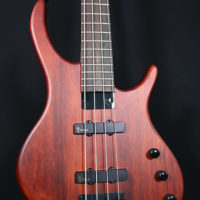
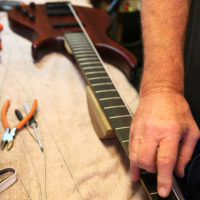
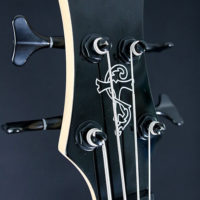
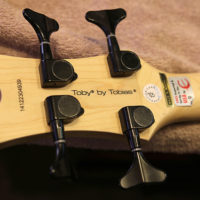
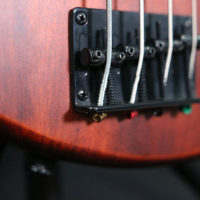
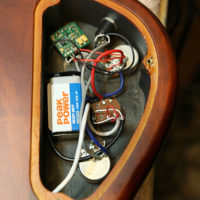
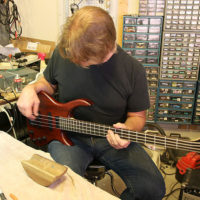
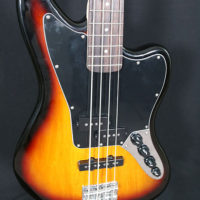
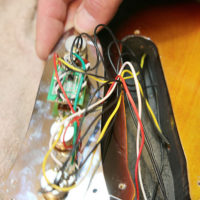
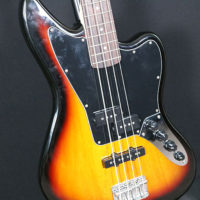
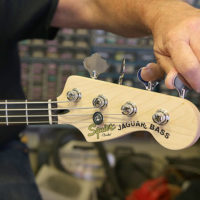
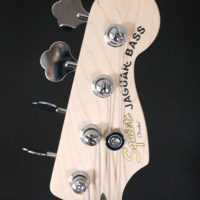
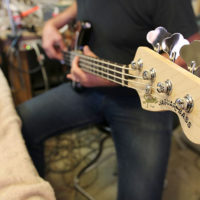
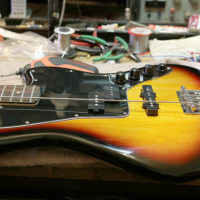
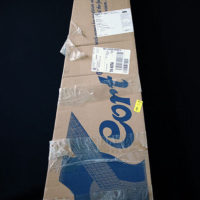
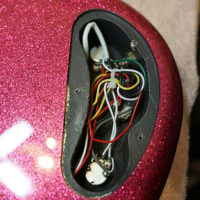
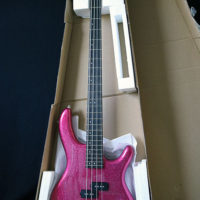
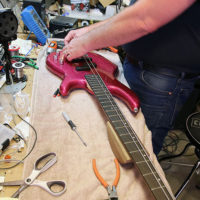
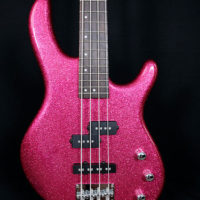
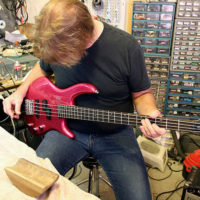
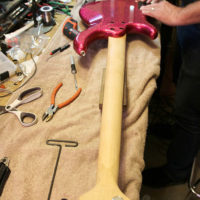
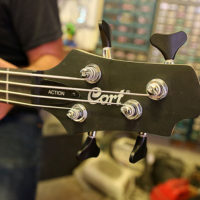
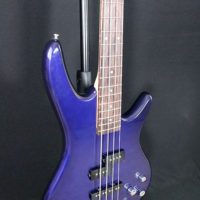
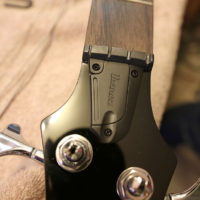
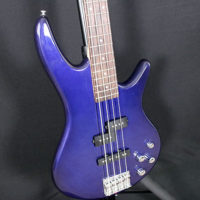
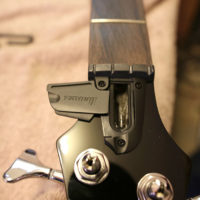
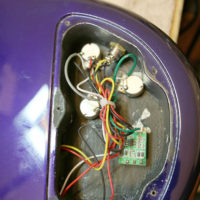
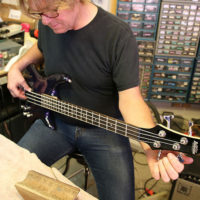
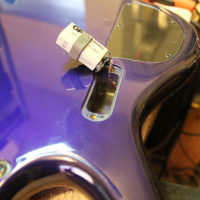
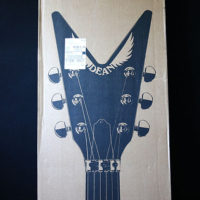
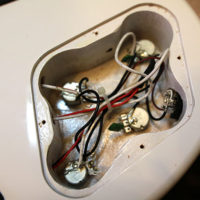
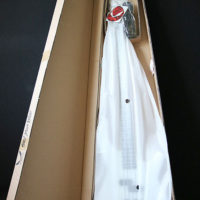
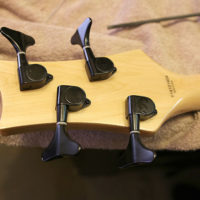
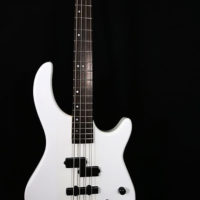
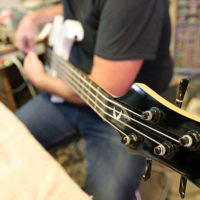
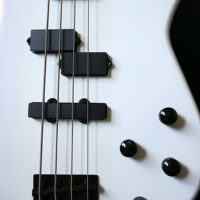
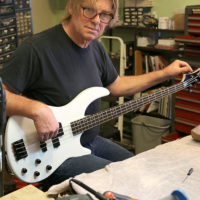
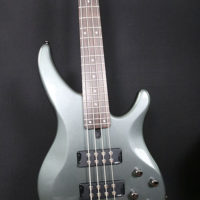
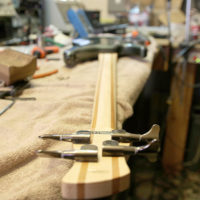
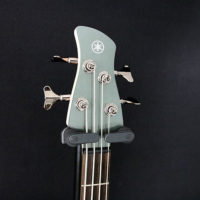
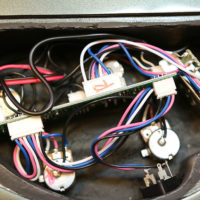
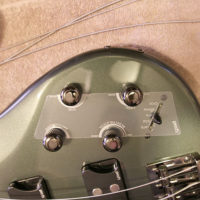
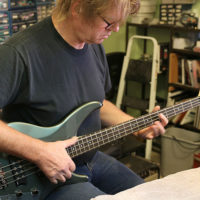
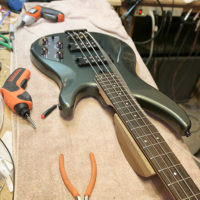
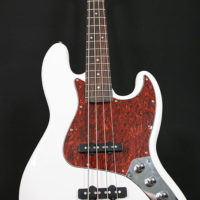
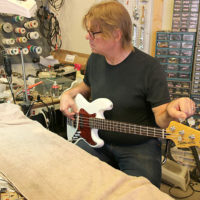
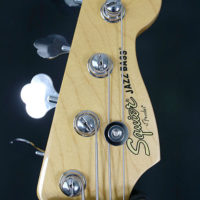
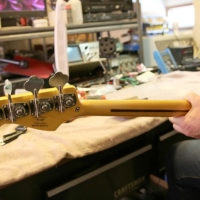
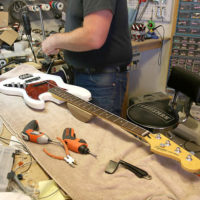
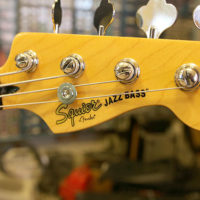
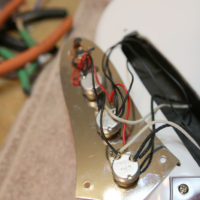


Comments
Got something to say? Post a comment below.